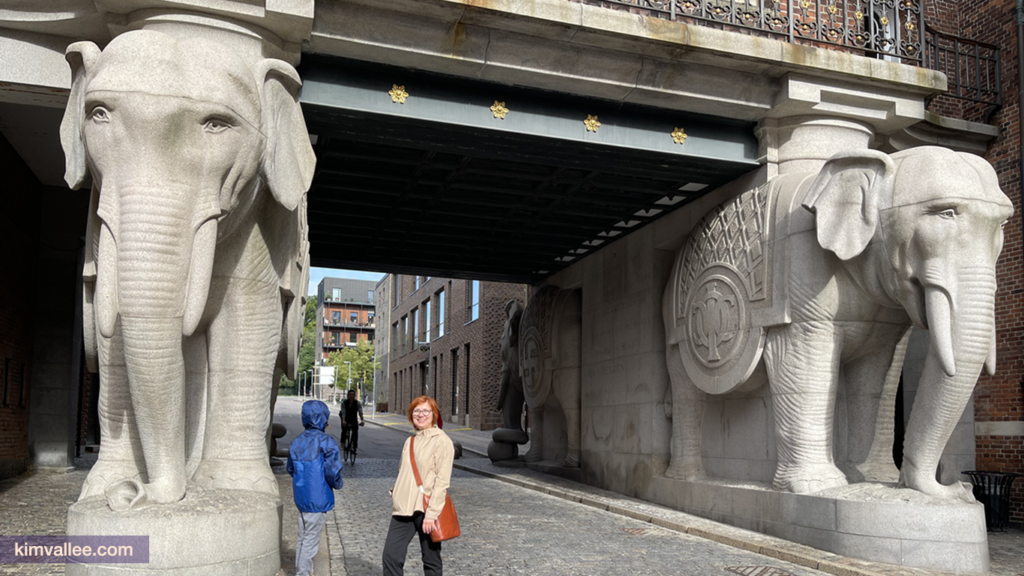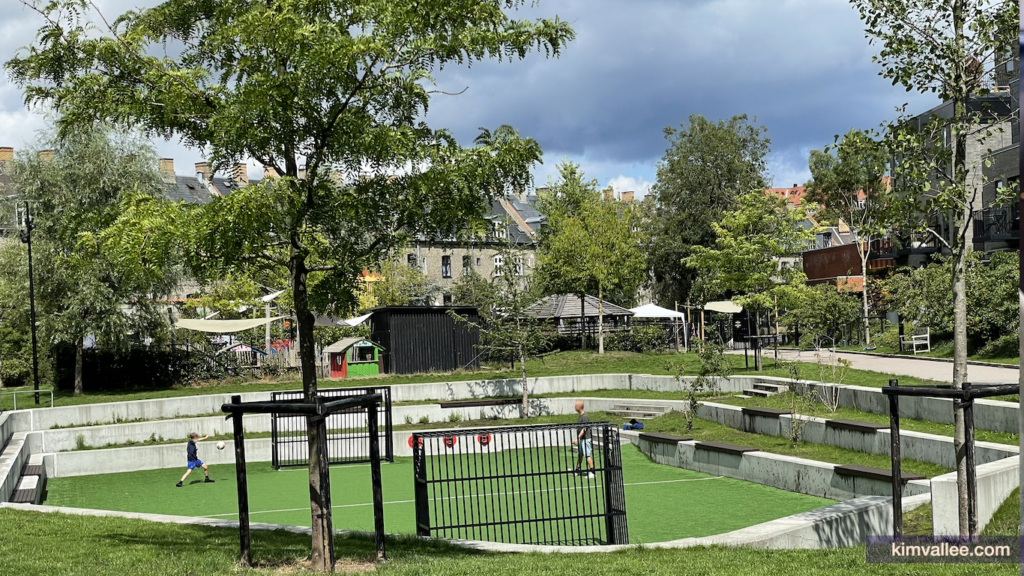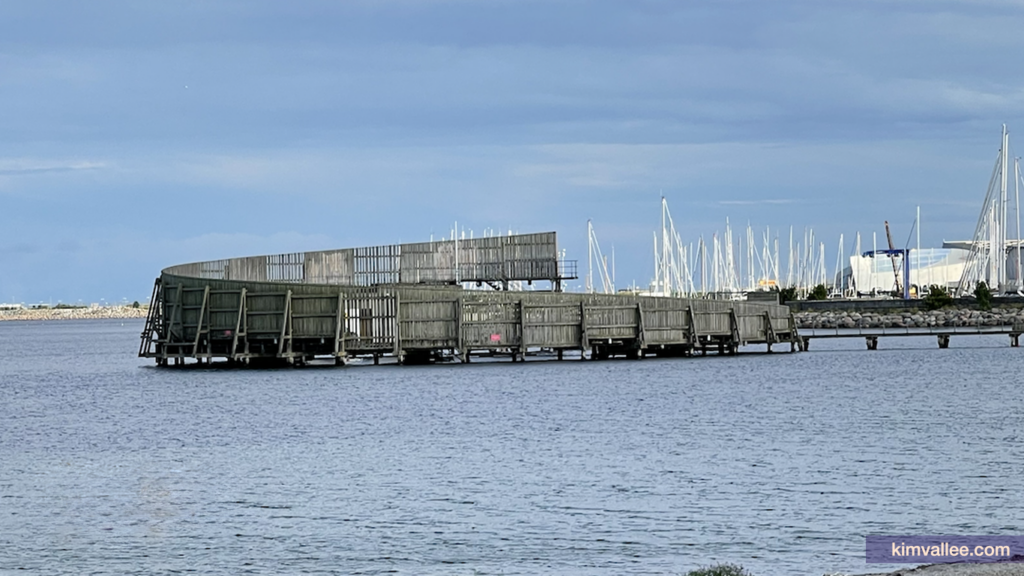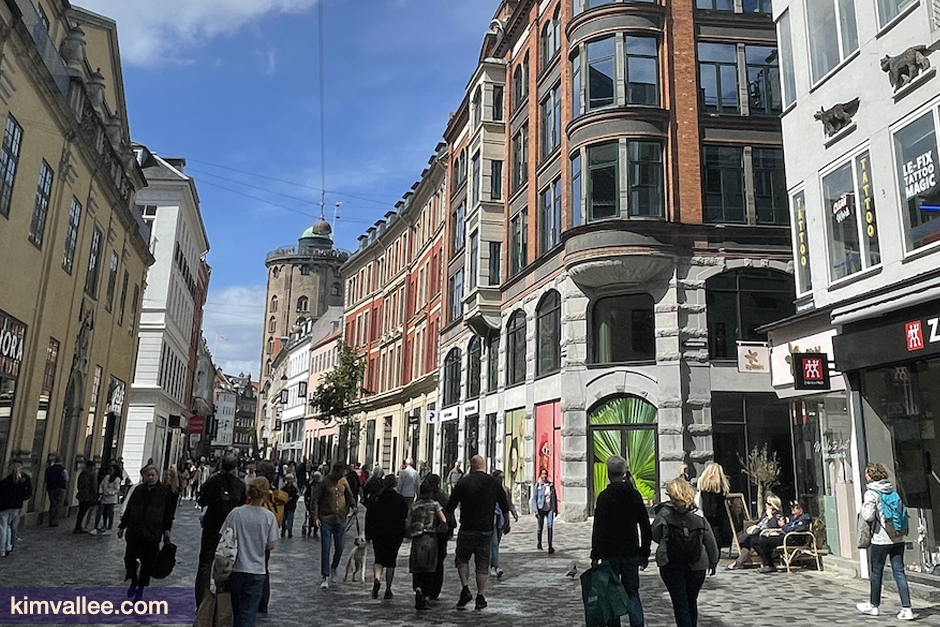For my birthday present last summer, we did something on my bucket list: we went to Denmark. Since I wanted a glimpse of other Scandinavian countries, we booked a North European cruise in the middle of our stay.
When I travel, I love to explore residential areas and do things that the locals do. I love to see their architecture and design in the real world, not just what we see in museums. I usually stay away from the tourist areas.
Our itinerary meant that we needed to check in at a hotel in Copenhagen on three different dates. Changing hotels several times in a single city is unusual. In retrospect, it allowed us to fully experience the different sides of the city.
Our trip to Copenhagen followed these rules. We didn’t see the little mermaid. On one of the walks, we stopped by Nyhavn, the most Instagrammed street in Copenhagen. It was my least favorite spot of the entire voyage. It’s for tourists. There are plenty of beautiful architecture, great food, and real local life in other parts of the city. Let’s discover them together.
Carlsberg City District
After 160 years as a closed industrial site, it was decided to redevelop the entire neighbourhood where the old brewery site used to be. The vision was to transform the original Carlsberg brewery site into a place where to live, hang out, shop, study, raise a family, go for a walk, relax, spent time outside, work and enjoy life.

Discovering Carlsberg Byen (Carlsberg City District) was a nice surprise. It wasn’t planned. The reason that we were in Carlsberg Byen was because I saw this cool boutique hotel. Hotel Ottilia grabbed my attention when I saw the rooms with a comfy seat on a big round window. I knew that the hotel was close to the famous Elephant Tower. But it’s only when we got there that I realized that the hotel was in the former Carlsberg factory. This explained the industrial charm of the social spaces where we enjoyed complimentary Wine Hour and Nightcap Hour. A great start for our trip.
Our schedule meant that we only stayed one day in this neighbourhood. We could have stayed longer especially with the reopening of Home of Carlsberg last December after an extensive modernisation of its exhibit.

With its 25 urban spaces and gardens, Carlsberg Byen is a pleasant introduction to Danish way of life. I had fun admiring the various patterns used in brickwork and see examples of great community-focused urban planning on our walk. One of my favorites is Østen for Humlen, a cosy urban oasis between the historic terraced houses in Humleby and Krøyer House. A sunken football pitch yard, a kids playground to die for, and plenty of space to relax on the grass, you can’t ask more to infuse a sense of community to a neighbourhood.
Another experience that I wish we did was the luxurious thermal baths located in the basement of the old brewery. I visited the lobby of AIRE Ancient Baths Copenhagen and was in awe. When you stay at Hotel Ottilia, you don’t even have to go outside to access the baths. Since those under 18 years old aren’t admitted, I wasn’t willing to exclude our son from what we did on our first day in Copenhagen.
I want to point out a key element about Carlsberg city. The Danish didn’t leave it to developers to redo the district. Instead, they launched the largest international architecture award for the World’s Best Master Plan to design this huge development. When you walk in Carlsberg City District it shows that the urban spaces, the transitions between sections, and the attention to the quality of life were not an afterthought. If you are curious to know, the Danish architecture firm Entasis won the competition.
If you are familiar with Copenhagen, Carlsberg Byen is situated between Frederiksberg, Valby and Vesterbro. By choice, we walked up to Vesterbro, but we could have easily take public transportation.
Frederiksberg
Then, we stayed in the theatre district of Frederiksberg. Frederiksberg is a small, posh city within the city (Copenhagen). Since it’s well located, we decided to use a bike as our mode of transportation. After renting a bike at the hotel, we visited and had a delicious lunch at the National Museum of Denmark.

The most unique experience we had in Frederiksberg was Cisternerne, a subterranean art space in what used to be the old water reservoir. They turned the cisterns, a dripstone cave that could hold 16 million litres of water into two art experiences. First, the illuminated dripstone cave, and then, the work of an international artist or architect who created an exhibition particularly for this underground space. The dripstones remind us of the slow decay of the building and show a natural process. You enter Cisternerne through Søndermarken, a park built over the cisterns and open to the public since 1852.
To give you a relationship between these places, the Cisternerne is located in Frederiksberg on the border to Valby and Carlsberg Byen.
Indre By
Our last stay was in a quiet street in the inner city. Indre By is also known as Copenhagen K. area or Downtown Copenhagen. Staying in the inner city made it easy to do touristy stuff like the Round Tower, the Botanical Gardens, King’s Garden, Frederik’s Church, and visiting the castles where the Danish monarchy live (Amalienborg Slot).

Beyond its historic landmarks, Indre By offers a nice local vibe and great shopping. On our way to shop on Østergade, we fell in love with a small local café called Segall’s where we ate a late breakfast. We returned to Segall’s the next day for lunch. And it’s not for a lack of cafés around Strøget. To provide some context, Strøget refers to the 1.1 km stretch comprising Frederiksberggade, Nygade, Vimmelskaftet, and Østergade. These pedestrian streets are essential stops for shopping and hanging out when visiting Copenhagen.
Every family and amusement park lover want to stop at Tivoli Gardens. Opened since August 15, 1843, Tivoli Gardens is both an amusement park and a garden in the middle of Copenhagen. Fun fact: Walt Disney was inspired by what he saw at Tivoli Gardens for its design of Disneyland. And contrary to most restaurants at Disney parks, you eat well at any of its restaurants. Accessible from the streets to everyone, the Tivoli Food Hall, though a busy food court, always has places to sit.
Last but not least, the Harbour Baths
Given the cool summer temperatures in Copenhagen, it might seem surprising that the city has built many harbour baths.
Being Danish, the designers approached the task with style. They hired talented architects to design one of a kind harbour baths. Each facility offers toilets, plus changing rooms with showers and lockers. All that free of charge for residents and travellers to use!
I wanted to see Kastrup Sea Bath. Why did we choose to bike to Kastrup Sea Bath, 20 minutes away from Copenhagen, instead of visiting another harbour bath? Because Kastrup Sea Bath is an architectural gem with beautiful natural surroundings. And it gave us the chance to see two more areas of the city.

While we cycled between the beach and the Amager Strandvej park, we began to see the structure known as ‘the snail’. Both the beach and the sea bath are great spots to view Saltholm Island and Sweden from the shore. We walked 100 meters on the wooden pier to reach the circular wooden enclosure from which people swim and jump into the deep seawater. Despite the cold water and the cloudy day, we could hear the joy of locals and visitors experiencing a unique swim.
We took some photos and took the time to enjoy the view of the harbour bath, Saltholm Island, and Sweden from the shore. Then, we stopped at various parks and gardens on our way back to the hotel on our rented bikes.
Leave some things to chance
As we walked in Vesterbro, I spotted a multigenerational community center. We entered to check it out. The place was filled with diverse groups: a dad and his son playing ping pong, workers working on their laptops, someone reading a book, old people, young people, and friends chatting together.
Wanting to know more, we talked to a resident. We learned that a non-profit organization bought this unused church and converted it into a bright and airy community center. He told us about the picnic tables placed in the street’s green spaces and how they were used by people. He showed us the small café at the back where we could buy beverages, sandwiches, pastries, and snacks. On our way out, we looked at the large bulletin board that informs people of the workshops and activities happening that week. It gave us a sense of what it looks like to live in this community.
On our way to the world’s second-oldest amusement park, we walked by Meatpacking District in Vesterbro. The Meatpacking District is now known for its restaurants, nightclubs and art galleries. I took a note to come back but we didn’t have time.
At Meatpacking District, the large windows gave me a glimpse of what was going on at SPACE10: the IKEA research and design lab exploring the future of living. I was disappointed that I couldn’t enter to see more of SPACE10. When I came back home, I learned about the announcement that SPACE10 had closed its doors for good. That explains it!
I could go on sharing the many cool things to do and see in Copenhagen. Personally, I plan to return and explore what I missed last summer. My main takeaway? Take the time to discover the local way of life on your next vacation.

